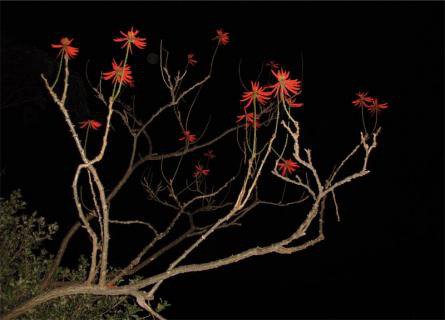The Poetics of Life
dal 8/11/2010 al 17/12/2010
Segnalato da
H.arta
Andrea Buttner
Bruno Gironcoli
Ion Grigorescu
Pedro Neves Marques
Fernando Mesquita
Michaela Moscouw
Szent Auby Tamas
Hugo Canoilas
8/11/2010
The Poetics of Life
Galerie Dana Charkasi, Wien
A group show with H.arta, Andrea Buttner, Bruno Gironcoli, Ion Grigorescu, Pedro Neves Marques, Fernando Mesquita, Michaela Moscouw, Szent Auby Tamas. These artists' works are presented as a constellation, in other words, a relation between points in their macro dimension.

curated by Hugo Canoilas
H.arta, Andrea Büttner, Bruno Gironcoli, Ion Grigorescu, Pedro Neves Marques, Fernando Mesquita, Michaela Moscouw, Szent Auby Tamás
Is art larger than life? Or is life larger than art?
To me these are meaningless questions because the nature of these two things is different. Their correlation is, however, guaranteed. Art, alongside poetry and philosophy (political thinking, or the so-called ideal politik) are activities that give humans texture, saving us from the tabula rasa.
True intellectuals (term used by Sartre) would be those that let themselves go with the flux of events developing before them: life. Joining this flux, they incorporate an experience. It is then the role of the true intellectual, in a distancing movement, returning to his condition of someone holding specific technical knowledge, to aid the movement of the masses.
Life is simultaneously the origin and the destination of all artistic activity. Art taken as a certain type of knowledge has the whole (life) as its origin and is destined to return to that whole (people).
Another dimension inherent to life is related to the productive force - where the title of this exhibition takes its meaning. Life is the productive force of art, clearly distinct from the current self-consuming art that feeds on itself, making art that only wants to look like art. This transforms art into a conservative activity that denies the rhizomatic nature of this singular human activity.
Art has allowed the values of democracy, the market, googling, the speed of information and interest quotas, enter into its life. Art has more than ever become impregnated in human values without being able to turn this around, to become an autonomous thought, an actual moment, or a moment to be alone with oneself.
It is convenient to distinguish the way that this inter-relation between art and life is made by the nature of artist: the first distinction is that of the affirmative force and the reactive force. The artist that uses a part of the body that is conscious utilizes a reactive force. A greater force, the affirmative force, is oppressed in the present as an unconscious force, one that probably embraces the secret that binds us to art.
Another distinction would be that of the impressionist and expressionist characters of the artists. The impressionist artist returns what was visually understood in an immediate gesture. These artists operate as a derivation machine, receiving a varied set of impressions and returning them with the opacity of the artist’s activity. The expressionist artists work from a knowledge processed through the body, among memories, experiences that remain between the stomach and the head (aesthetic experiences, things that are absurd or nameless, etc.), that are processed slowly and become visible through the expression they are given, their plastic value.
A third figure, absolutely permeable to both life and art, absolutely weak and elastic (can it be in relation to the super-human?) is the cannibal. The cannibal absorbs everything and lets the body and spirit regurgitate what it doesn’t want or cannot assimilate.
This exhibition, conceived for the Dana Charkasi Gallery does not map the relation between art and life since to do such a thing it would be necessary to resort to Borges’s library, or to create a palimpsest capable of containing all the individual practices, all of them receptacles of a specific dimension in this context.
The idea of a relationship between poetics and life might show that art could still be useful as an image for life, establishing a community of non-negotiable differences between a set of artists: Andrea Buettner, Bruno Gironcoli, Ion Grigorescu, H.arta, Fernando Mesquita, Michaela Moscow, Pedro Neves Marques and St. Auby Tamás.
These artists’ works are presented as a constellation, in other words, a relation between points in their macro dimension. Points that would become a world in their micro vision. A brief essay on the works in the exhibition will be available at the exhibition as an epilogue to visiting the exhibition.
Hugo Canoilas
Vienna, October 14th, 2010
Image: Andrea Büttner, untitled, sheet-fed offset printing, 148 × 210mm (A5 Format), 2010
© Andrea Büttner
Opening: Tue, 9th Nov., 7-9 p.m.
with a performance of „The Wandering Chief“ by Pedro Neves Marques um 7:30 p.m. Anonther performance of „The Wandering Chief“ will be presented Wed, 24th Nov. at 7 p.m.
Galerie Dana Charkasi
A-1010 Vienna, Fleischmarkt 11 Griechenbeisl-House, 2nd floor
Opening Hours: Tue - Fri 1 - 6 p.m., Sat 11 a.m. - 2 p.m.
and by appointment



